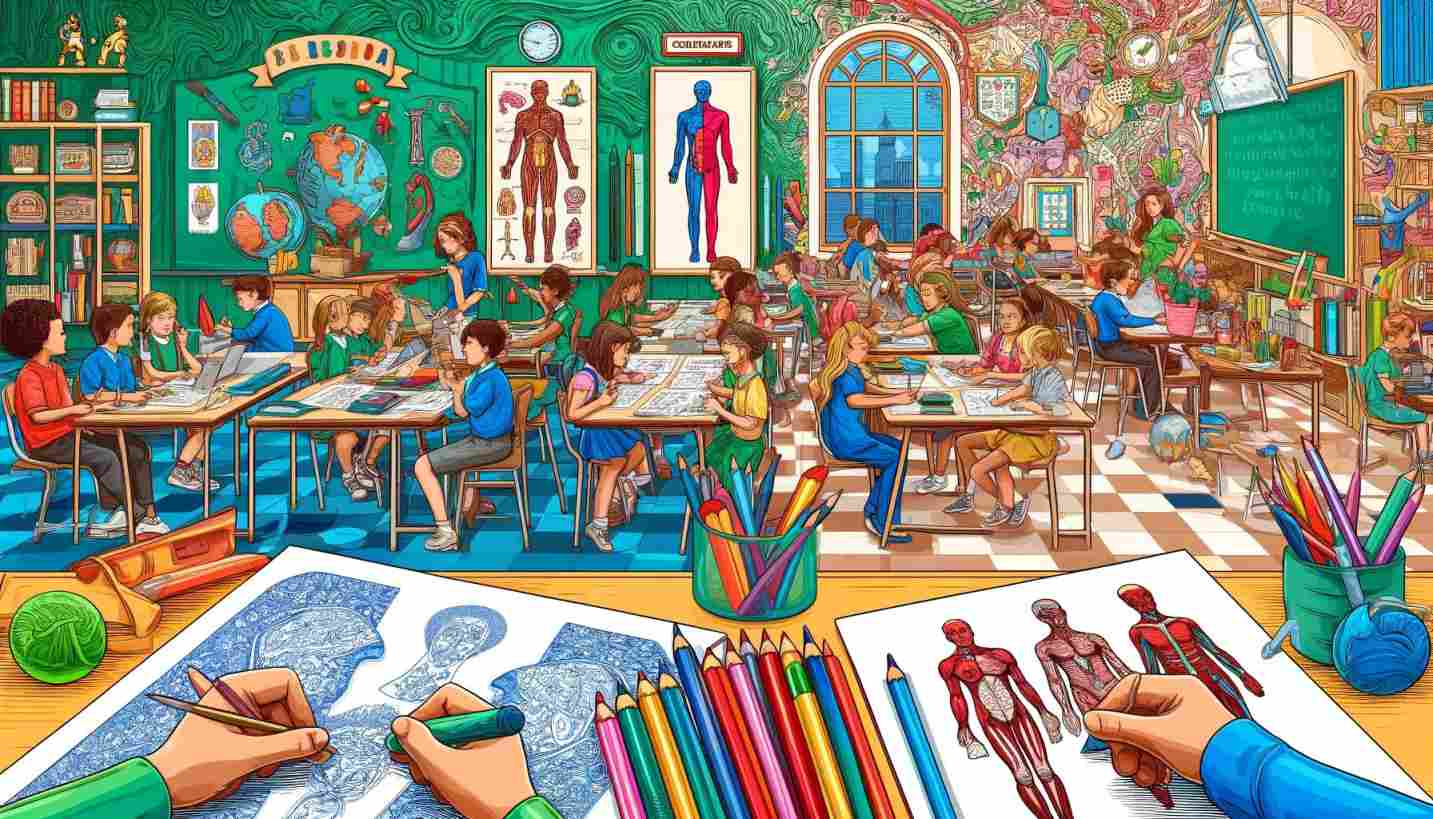Coloring isn’t just a fun activity for kids; it’s a foundational art form that nurtures creativity, fine motor skills, and an appreciation for visual beauty. “Mastering the Art of Coloring: Essential Tips for Young Artists” is a beginner’s guide that offers insights into techniques that elevate coloring from a simple pastime to an artful pursuit.

This article provides young artists the knowledge they need to enhance their coloring skills, from selecting the right tools to understanding color theory.
Choosing the Right Tools
The journey to coloring mastery begins with the right tools. Explain the differences between crayons, colored pencils, markers, and watercolors, highlighting the unique effects each can create on paper.
Emphasize the importance of quality — how high-grade materials can significantly affect the outcome of their art. Also, ergonomic tools designed for little hands will be introduced, ensuring comfort and control.
Also Read: WFH Moms Have Additional Parenting Challenges To Consider
Grip and Control
A proper grip is crucial for precise coloring. Offer tips for holding coloring tools correctly, such as the “tripod grip,” which provides stability and control. Discuss how practicing grip improves coloring within the lines and prepares children for writing skills.
Exploring Stroke Variety
Variety in coloring strokes can add texture and depth to the artwork. Teach children about different strokes: straight lines, circular motions, cross-hatching, and back-and-forth strokes.
Include fun exercises encouraging experimentation with these techniques, helping young artists discover their unique style.
The Magic of Color Blending
Color blending is a technique that can bring a coloring page to life. Provide step-by-step instructions on how to blend colors smoothly, whether by layering lightly with colored pencils or blending wet markers. Highlight how blending can create new colors, gradients, and shadows, adding dimension to their work.
An Introduction to Color Theory
A basic understanding of color theory can vastly improve coloring projects. Introduce young artists to the color wheel, primary and secondary colors, and the concept of complementary colors.
Explain in simple language how colors interact and how students can use this knowledge to make their coloring pages pop.
Creating a Conducive Coloring Environment
A dedicated space for coloring can significantly enhance a child’s engagement and creativity. Offer suggestions for setting up a coloring nook with proper lighting, comfortable seating, and organized access to coloring tools and pages.
This space should invite exploration and offer a sense of ownership over their artistic journey. “Mastering the Art of Coloring: Essential Tips for Young Artists” underscores the value of coloring as more than just a pastime.
Through careful tool selection, practice of grip and strokes, exploration of color blending, and understanding of color theory, children can develop their artistic abilities and express themselves creatively.
Coloring in Math: Making Numbers Vibrant
Color by numbers is a well-loved activity that effortlessly blends art with mathematics. This method is particularly effective for teaching young learners about numbers and basic arithmetic operations.
For example, assigning different colors to specific answers can turn a worksheet of addition or subtraction problems into a vibrant piece of art. This approach reinforces mathematical concepts and makes the learning process enjoyable.
Science Comes Alive with Coloring
Science often involves complex concepts that can be challenging for students to grasp. Coloring activities can simplify these concepts, especially labeling anatomical diagrams or illustrating scientific processes.
For instance, a coloring page of the water cycle helps students visualize and understand the stages of evaporation, condensation, and precipitation. Similarly, coloring detailed diagrams of plant cells or human anatomy can aid in memorizing the functions of different components.
Exploring History Through Hues
History can sometimes seem like a list of dates and events to memorize. Coloring pages featuring historical figures and landmarks can bring these stories to life, making them more relatable and memorable for students.
By coloring an illustration of Abraham Lincoln, students might be more inclined to learn about his presidency and the Civil War. These activities can spark curiosity about historical events and figures, encouraging further research and reading.
Also Read: How to Help Your Child with Homework?
Tips for Educators and Parents
To maximize the educational benefits of coloring activities, educators and parents can:
- Incorporate coloring into routine learning: Use coloring pages as warm-up activities or to reinforce lessons.
- Choose or create relevant content: Ensure coloring pages are relevant to the curriculum and engaging for the students.
- Encourage discussion: Use completed coloring pages as a basis for class discussions, presentations, or further research projects.
- Provide feedback: Acknowledge students’ efforts and creativity and discuss what they’ve learned through the coloring activity.
Integrating coloring activities into daily learning is a testament to the versatility and effectiveness of blending traditional educational methods with creative approaches.
By engaging students in coloring across various subjects, educators can foster an active learning environment where students are excited to explore, understand, and remember complex concepts. This approach makes learning more enjoyable and cultivates a lifelong love for learning.
Source: ESLE